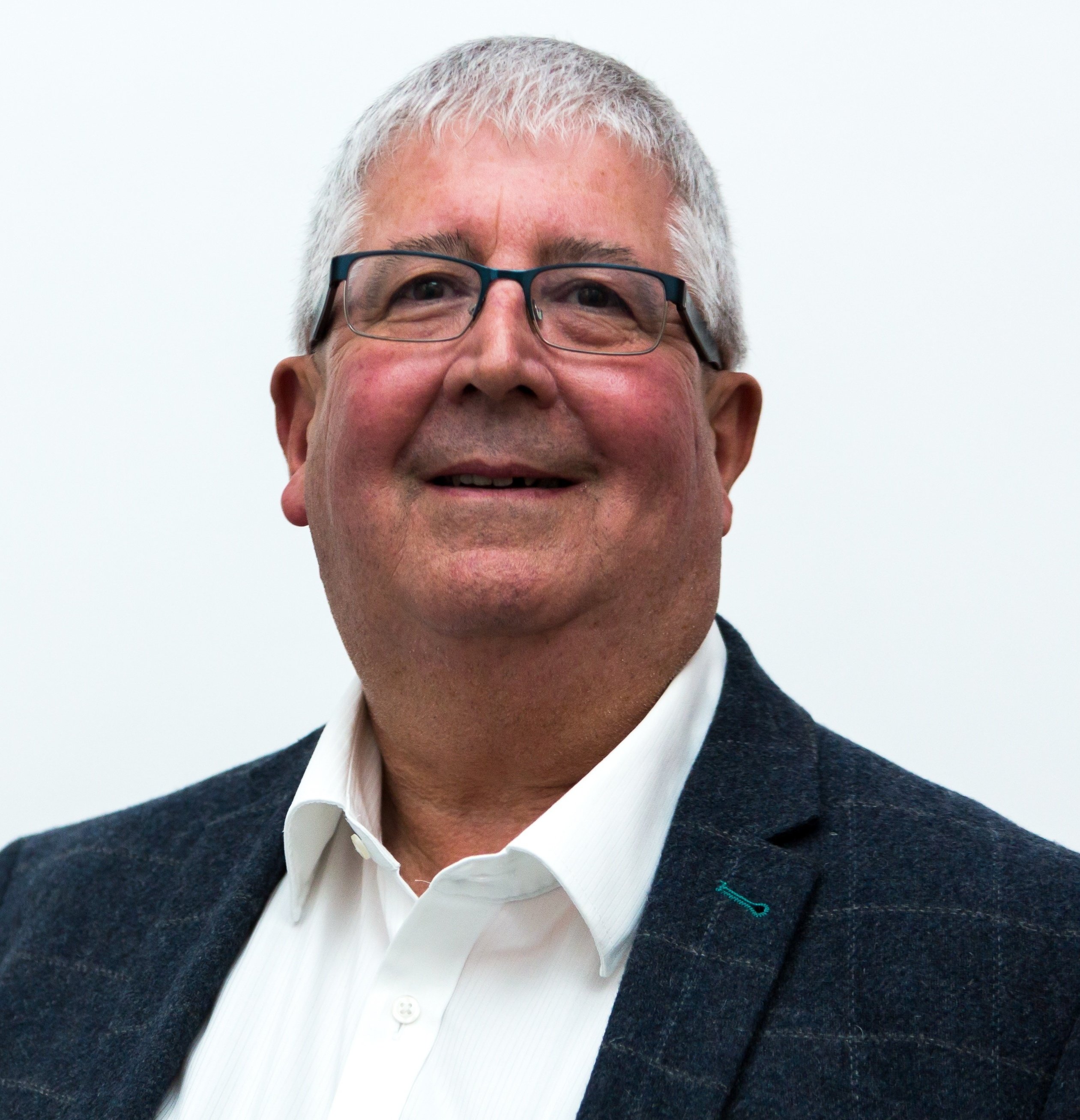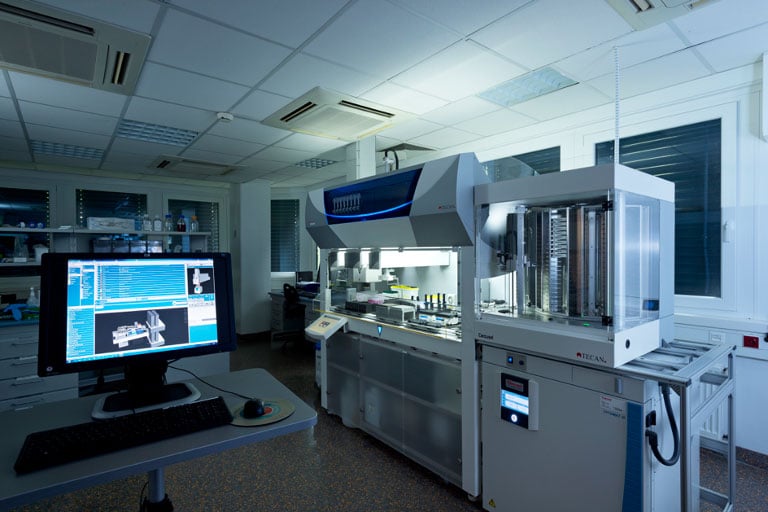Keywords:
By Kevin Moore
With today's demands of throughput and flexibility, how can you perform screening better? We spoke to Dr. Bernhard Ellinger, Principal Scientist at the Fraunhofer Institute for Molecular Biology and Applied Ecology. Dr. Ellinger is one of the first testers of the Fluent®* 780 liquid handling automation platform from Tecan. He put the system through its paces in a diverse range of applications for over 3 years. Here’s what he learnt.

Dr. Bernhard Ellinger talks about his experience as an early beta-tester of the Tecan Fluent liquid handling automation system for compound screening
Dr. Ellinger, please tell us about your scientific background and familiarity with lab automation.
“I am a biochemist by training and I did my PhD at a large research institute in Germany in the area of chemical biology. During this time, I first encountered laboratory automation and a Tecan system. At that time, the assays we were performing were small-scale, just a few hundred compounds, so we were using laboratory automation technology but not much data handling and analysis.”
A quarter million compounds and counting
“When I then moved to the IME ScreeningPort, where I work now, these numbers increased substantially. We are now screening up to a quarter of a million compounds and we use laboratory automation systems with advanced hardware and software solutions to do that. The Tecan Fluent is our most recent acquisition and it gives us freedom to quickly adopt new assays and projects.”
What is the general focus of your research?
“The research we do is actually quite diverse. I am responsible for early ADME/tox testing, and I also work on cancer and high throughput screening projects in which we perform biochemical and high content assays to analyze enzymes or look at protein-protein interactions.”
Three years of hard testing
You are a true early adopter of the Tecan Fluent automation platform. How long have you been using it now? What do you think about it?
Fluent 780 in the lab
“We began beta-testing the Fluent in 2014, so we have had the system for 3 years.
“The Fluent platform allows us to run small to mid-sized screens and compound profiling projects in a shorter time than we could using other systems. We have found that setting up an automated assay and performing necessary quality controls is much faster using the Fluent. This is especially the case when you consider the quality controls you have to perform before each run of an assay. This can be done much easier and faster using the Fluent 780, compared to other automation platforms.
“We also like the high degree of parallel work we can do with the Fluent system. We can easily set up an assay to be able to use multiple cell lines or a number of isoforms of an enzyme in one run. The ability to perform these parallel runs means that we also profit from the least amount of reagents consumed by the system.
“Fluent has empowered us in a way that we are now able to act more quickly on small and medium-sized projects, especially when those projects involve repeated screening campaigns. That is a real plus of the system.”
A clean and standardized approach for stem cell research
Have other research groups at the Fraunhofer Institute used Fluent in their work? What did they think? How has it affected their research?
“The Fluent system is heavily used by our stem cell research department, and for them it is important to have a system that delivers consistent quality in a clean atmosphere. Having the level of quality that the Fluent offers has allowed them to transfer their embryo toxicity assays to the system and give them a degree of standardization and throughput that is not common in other stem cell projects. Based on the results they have been able to achieve, they are now moving on to the next project and are looking at the differentiation of cells in hanging drops using the system. Liquid handling is crucial while working with the hanging drop method, and Tecan is best for that type of work.
“My colleagues also use the Fluent system when they have to quickly generate data. For example, we have a medicinal chemistry program that receives 50 to 100 compounds every 1-2 months, and thus the automated system helps us to produce screening results very quickly to be able to generate new ideas and compounds for the next round of lead optimization. Fluent enables us to run an assay with three enzymes in parallel the same day the compounds arrive in the lab. Together with the precision it provides, this is something we could not achieve otherwise.”
Surprising speed and a small footprint
You know the Fluent system and automation quite well. What did you find surprising about it?
“When we first turned it on, we were really surprised by the speed of the mobile elements of the system. The pipetting head is moving much faster than anything we were used to. Also, because the system is a closed one, the degree of safety is higher than the other systems we operate.
“What also surprised us from the beginning was the small footprint of the machine. We have another system, which has a footprint roughly the size of my living room. The Fluent only uses the space of a sterile bench.
“After we got used to these features, we are still impressed by the intuitive control of the software and the precision of the liquid handling. The software helps a lot when you are setting up an assay. The smart commands and the ability to include user prompts are real advantages when you compare it to other systems. These are very helpful features.”
More support for parallel work and imagers
”What in your mind are the important next steps in the development of Fluent?
“I see the Tecan Fluent as a fully mature laboratory automation platform. With the intuitive software and default liquid definitions, you can directly start working on the machine without any kind of adaptation. Improvements are always possible, though. Our wish list for the Fluent has only two points: more advanced scheduling software that enables more parallel work; and implementation of other devices, especially microscopes and imaging devices to enable direct imaging.
Watch Dr. Ellinger's talk at SLAS 2017 on the subject:
*Disclaimer: Within Canada & USA, for research use only. Not for use in diagnostic procedures.
Keywords:
About the author

Kevin Moore
Kevin Moore is Head of Markets and Applications based out of Tecan’s head office in Männedorf, Switzerland. He heads the team tasked with bringing both products and application for the liquid handling to the market. Prior to joining Tecan in 2007, he was head of Compound Management and Technology project manager for the Neuroscience Research Centre of Merck & Co in the UK, where he worked for Merck for 20 years.












